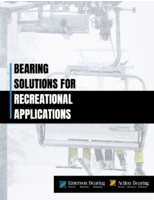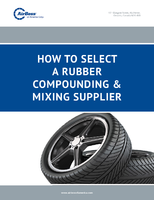Torque Arms help eliminate screw fastening errors.
Press Release Summary:
Designed to ensure that every screw is correctly tightened in correct sequence, EZ-Glider Position Control Torque Arms consist of torque reaction arm with encoders mounted at 2 pivot points and control box, which tracks axis movement by converting angle counts to X-Y position of screwdriver. Driver lock-out feature disallows activation of driver if wrong sequence is attempted, and torque adjust feature automatically changes driver torque to new value if required.
Original Press Release:
Introducing EZ-Glider Position Control Torque Arms
Encoder and Easy to Program Controls Allow for Exact Positioning for Critical Tightening Sequence Applications
The new EZ-Glider Position Control torque arms by Mountz Inc. help manufacturers detect and eliminate costly screw-fastening errors during the assembly process. Position Control torque arms are designed to reduce the risk of improperly fastened screws, ensuring that every screw is in the correctly tightened in the correct sequence. Using the EZ-Glider Position Control torque is like putting the eyes and ears of a quality control manager where they are needed most - right on the assembly area.
"Sequence based fastening is critical to proper process control and a quality fastening result for many applications," said Brad Mountz, President & CEO of Mountz, Inc. "If an assembly exhibits cross talk, a phenomenon where torque to one fastener changes the result to another in the in fastening pattern, altering the sequence is often necessary to achieve proper results. An encoded torque arm is perfect because it guides the operators sequence and provides feedback if done incorrectly."
Assembly sequences are easily programmed for the EZ-Glider Position Control torque arms from an easy-to-use control box. Up to nine sequence programs can be stored and are manually or automatically selected for easy recall.
The EZ-Glider Position Control torque arm consists of a torque reaction arm with encoders mounted at the two pivot points and a control box. The control box is used for programming and it tracks the axis movement by converting angle counts to the precise X-Y position of the screwdriver. The X-Y location is calculated from encoder values, allowing the operator to easily teach the torque arm a programmed sequence pattern and then use it to control the assembly process. Programming is as simple as moving the driver over the sequence location and then pressing a button. Popular features are driver "lock out" which disallows activation of the driver if the wrong sequence is attempted and torque adjust, which automatically changes the driver torque to a new torque value if required.
The EZ-Glider Position Control torque arm is compatible with most air, electric screwdrivers and DC control systems. The torque arm can also interface with most intelligent driver systems that store multiple torque programs with external digital I/O control. The Mountz Position Control torque arm provides a smooth, flexible range of motion as the arm absorbs torque reactions from clutch, stall and other electric & pneumatic screwdrivers.
Specify a Tightening Sequence: Why?
Many joints consist of more than one fastener and bringing together surfaces that are not completely flat can be a very challenging torque problem. The sequence of tightening fasteners can have a major influence on the resulting preload and clamping force, which is what holds two parts together. With such joints, consideration should be given to specifying the sequence in which the fasteners are to be tightened. Because the joint surfaces compress, tightening one fastener in the vicinity of another will affect the preload generated by the first fastener tightened. This is called Cross Talk.
A good tightening sequence ensures that an even preload distribution is achieved in the joint. Since joints containing conventional gaskets have a comparatively low compressive stiffness, bolt preloads in such joints are particularly sensitive to the tightening sequence. Based on experience, if the bolts are in a circular pattern, a cris-cross (star) tightening pattern would normally be specified. For non-circular bolt patterns, a spiral pattern starting at the middle would normally be specified. On critical joints or joints that exhibit relaxation, a tightening pattern that tightens the fasteners more than once can be specified to ensure an even preload distribution.
Specify Ergonomic Solutions: Why?
When planning a production area, it pays dividends for manufacturers in the long term to plan the ergonomics of the operation and consult a health and safety inspector or ergonomic manager. Ensuring both the workplace and the assembly operation are compatible with the majority of operators that handle the assembly tools, reduces future costs arising from work-related health disorders among operators, along with costs arising from poor product quality or lack of productivity.
Some key questions manufacturers need to ask about their production area.
- How often do your assemblers complain of fatigue or arm pains?
- How much does a typical injury cost the organization?
- How many workman comp claims have you had?
- How often does a health and safety inspector review your applications?
- What ergonomic solutions are being considered for that application?
EZ-Glider Position Control torque arms are designed to improve production and quality control during the assembly process. The ergonomic design of the EZ-Glider torque arm reduces RMI (repetitive motion injury) and CTS (carpal tunnel syndrome). The effortless handling of the torque arm provides comfortable tool operation and increased production. The Mountz torque arm eliminates torque reaction of power and pneumatic tools.




